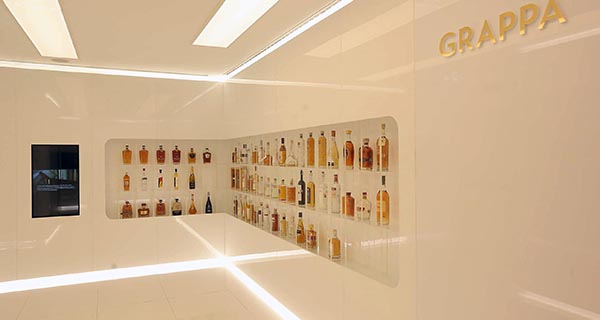
Grappa is undoubtedly the ultimate Italian spirit. It comes in many different aromas and flavors, as it is closely connected to the territory, domestic wine varieties, and craftsmanship. Its recipes are passed down from generation to generation. Due to the low yield of the marc (a ton gives only 3-4 liters of grappa), the volumes are quite small. In 2015, 75,000 hectoliters (about 20 million liters for consumer consumption) were produced. It accounts for about 2/3 of the production of Italian distillates.
HIGH POTENTIAL IN EUROPE AND IN THE US – The main importing countries are Germany, Switzerland, Austria, and the United States. However, there is much work to be done abroad. According to surveys carried out by AssoDistil (National Association of Alcohol Distillers of Spirits and Grappa), only 10% of production, i.e. less than 2 million liters, is exported. “And yet, grappa has considerable potential to expand abroad,” said Cesare Mazzetti, National Committee Chairman of AssoDistil, “Grappa is a nice, soft, and spicy (if aged) product, made from Italian grape varieties, which can act as a trailblazer to its consumption abroad. Also, great attention is paid to the selection of raw materials, namely the marc, which comes from high quality wines, and to the distillation system, which uses advanced processes that are constantly being improved. Grappa is now enjoying a renewed image, the one of a noble spirit to be sipped gently. It can increase its notoriety, for example, in the United States, where this product is barely known. At Expo, the Grappa Fair has been very successful, arousing interest from international buyers.”
ITALIAN GRAPPA IS NOW PROTECTED – Thanks to Decree 747, dated January 28, 2016, enacted by the Italian Ministry of Agriculture, the authenticity of Italian grappa has more protection against fraud. In fact, the Decree provides for tighter rules to protect IG Grappa (geographical indication), with precise indications on the bottling and aging-related denominations, such as “barriques”. Until recently, the operators of other countries could buy high-alcohol content grappa in bulk quantities, which was then used or transformed in their plants by adding sugar, diluting with water, separating aromatic oils, and other operations. The consumer of these products believed to be buying Italian grappa, whereas the actual product was the result of manufacturing operations conducted thousands of kilometers away from the area of origin. From August 1st 2016, grappa can be bottled exclusively outside the region of production, namely Italy, if sent abroad as a finished product. Therefore, operations, such as the mixing of different batches, sweetening, dilution, or refrigeration, are no longer allowed. The consumer will then be ensured that the grappa is original, from the manufacturer, and has not undergone any processing, even if bottled outside the area of origin. This measure has put a brake on counterfeiting and has safeguarded the geographical indication. An IG product is such only if you take the final characteristics of the region of production. For the producers, it will be easier to add value to this spirit which represents an important piece of the Italian agro-food sector.
